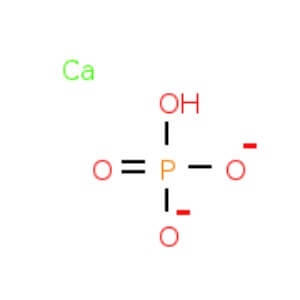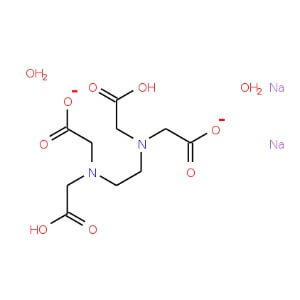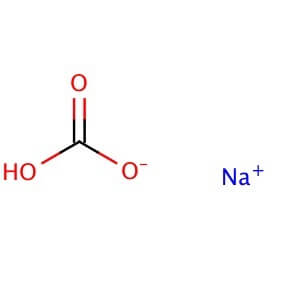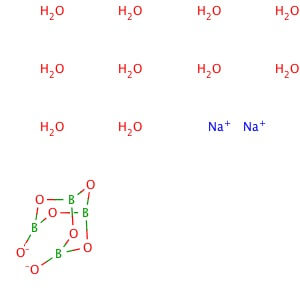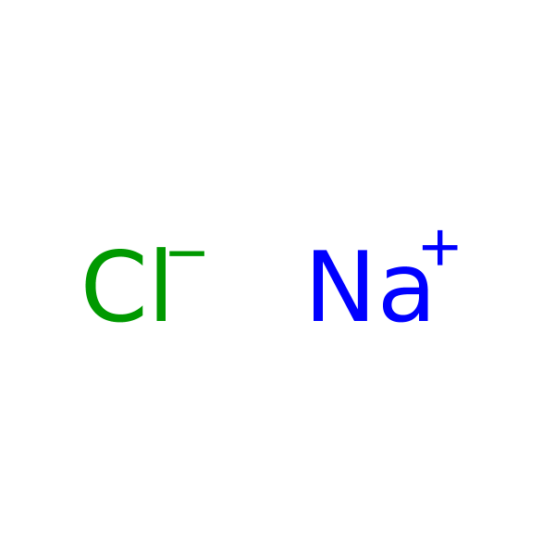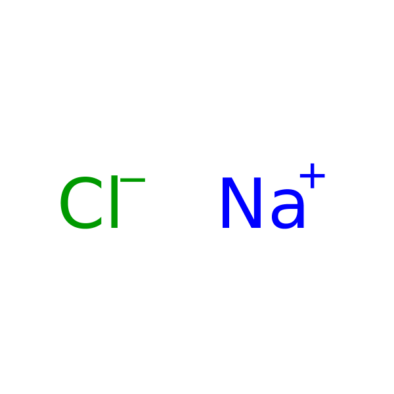Calcium Phosphate Di Basic
CAS NO: 7757-93-9
Molecular Formula: CaHPO4
Molecular Weight: 136.06
Description Synonyms Calcium orthophosphate, Calcium phosphate dibasic Description Calcium hydrogen phosphate Product Information CAS number 7757-93-9 EC number 231-826-1 Grade Ph Eur,BP,USP,FCC,E 341 (ii) Hill Formula CaHO₄P Chemical formula CaHPO₄ Molar Mass 136.06 g/mol HS Code 2835 25 00 Quality Level MQ500 Physicochemical Information Density 2.89 g/cm3 (20 °C) Melting Point 370 °C (decomposition) pH value 7 (10 g/l, H₂O, 20 °C) suspension Bulk density 900 kg/m3 Solubility 0.1 g/l Toxicological Information LD 50 oral LD50 Rat 10000 mg/kg LD 50 dermal LD50 Rabbit > 7940 mg/kg Safety Information according to GHS RTECS TB8528000 Storage class 10 – 13 Other liquids and solids WGK WGK 1 slightly hazardous to water Disposal 14 Inorganic salts: Container I. Neutral solutions of the these salts: Container D. Before placing in Container D, check the pH with pH-Universal indicator strips Storage and Shipping Information Storage Store at +2°C to +30°C. Transport Information Declaration (railroad and road) ADR, RID Kein Gefahrgut Declaration (transport by air) IATA- DGR No Dangerous Good Declaration (transport by sea) IMDG- Code No Dangerous Good Specifications Identity passes test Assay (complexometric) 97.5 – 102.5 % Assay (complexometric; calculated on dried substance) 98.0 – 102.0 % Substances insoluble in hydrochloric acid ≤ 0.2 % Carbonate (as CO₂) passes test Chloride (Cl) ≤ 0.03 % Fluoride (F) ≤ 0.0050 % Sulfate (SO₄) ≤ 0.5 % Al (Aluminium) ≤ 0.0200 % As (Arsenic) ≤ 0.0001 % Ba (Barium) passes test Cd (Cadmium)* ≤ 0.0001 Fe (Iron) ≤ 0.0400 % Hg (Mercury) ≤ 0.0001 % Ni (Nickel)* ≤ 0.0010 Pb (Lead)* ≤ 0.0001 Sr (Strontium) ≤ 0.03 % V (Vanadium)* ≤ 0.0010 % Residual solvents (ICH Q3C) excluded by production process Loss on ignition (800 °C) 7.0 – 8.5 % Loss on drying ≤ 2.0 % Particle size (< 63 µm) about 99 % Elemental impurity specifications have been set considering ICH Q3D (Guideline for Elemental Impurities). Class 1-3 elements are not likely to be present above the ICH Q3D option 1 limit, unless specified and indicated (*). Corresponds to Ph.Eur.,BP,USP,FCC,E341 (ii) Conforms to the purity criteria on food additives, except for use as additive in infant and young child nutrition, according to the current European Commission Regulation. Disodium Edetate
CAS NO: 6381-92-6
MOLECULAR FORMULA :- C10H14N2Na2O82H2O
MOLECULAR WEIGHT :- 372.24 g/ mol
SPECIFICATION IP BP USP Description A white ,crystalline powder, Odourless White or almost white, crystalline powder. White or almost white, crystalline powder. Solubility – Soluble in water, practically insoluble in ethanol (96 %) – Identification A. IR
B. Reaction
C. Reaction
D. Reaction
A. Must comply with the disodium edetate RS
B. No precipitate is produced.
C. No precipitate is produced.
D. It gives reaction of sodium salt.
A. Must comply with the disodium edetate RS
B. No precipitate is produced.
C. No precipitate is produced.
D. It gives reaction of sodium salt.
A. Must comply with the disodium edetate RS
B. The red color is discharge, leaving a yellowish solution
C. It gives reaction of sodium salt.
Appearance of solution 5 % w/v solution in carbon dioxide free water is Clear & colorless Clear & colorless – pH 4.0-5.5 ( 5 % w/v solution ) 4.0-5.5 ( 5 % w/v solution ) 4.0-6.0 Loss on Drying – – 8.7 %-11.4 % Calcium – – No precipitate is formed. Impurity A Limit of nitrilotriacetic acid(USP)
NMT 0.1 % NMT 0.1 % NMT 0.1 % Heavy metals NMT 20 ppm – NMT 50 ppm Iron NMT 80 ppm NMT 80 ppm – Assay 98.5 %-101.0 % 98.5 %-101.0 % 99.0 %-101.0 %(on Dried basis) Potassium Nitrate
CAS NO: 7757-79-1
MOLECULAR FORMULA :- KNO3
MOLECULAR WEIGHT :- 101.1g/mol
SPECIFICATION BP USP Description White or almost white, crystalline powder or colorless crystals. White or almost white, crystalline powder or colorless crystals. Solubility Freely soluble in water, very soluble in boiling water, practically insoluble in ethanol (96 %) – Identification A. Reaction
B. Reaction
A. It gives reaction of nitrates. B. It gives reaction of Potassium
A. It gives reaction of nitrates. B. It gives reaction of Potassium
Acidity or Alkalinity NMT 0.5 ml of 0.01 M HCl or 0.01 M NaOH is required to change the color of the indicator. – Reducible Substances The solution does not become blue within 2 min. – Chlorides NMT 20 ppm NMT 300 ppm Sulfates NMT 150 ppm NMT 1000 ppm Limit of Nitrite – NMT 5 ppm Heavy metals – NMT 20 ppm Arsenic – NMT 3 ppm Lead – NMT 10 ppm Ammonium NMT 100 ppm – Calcium NMT 100 ppm – Iron NMT 20 ppm NMT 10 ppm Residual Solvents – Meets the requirements. Sodium NMT 1000 ppm NMT 1000 ppm Loss on Drying NMT 0.5 % – Assay 99.0 %-101.1 % (on dried basis) 99.0 %-100.5 % Sodium Bi Carbonate
CAS NO: 144-58-8
MOLECULAR FORMULA: NaHCO3
MOLECULAR WEIGHT: 84.01
Alternate Names: Sodium hydrogen carbonate Application: Sodium bicarbonate is a commonly used laboratory pH neutralizer that reacts with acids and bases Purity: ≥99% Appearance : Powder Physical State : Solid Solubility : Soluble in water (50 mg/ml). Insoluble in ethanol. Storage : Store at room temperature Melting Point : 300° C Density : 2.16 g/cm3 at 20° C Refractive Index : n20D 1.50 Ki Data : CA IV: Ki= 6.6 mM (human); CA I: Ki= 12 mM (human); CA IX: Ki= 13 mM (human); Astrosclerin-3: Ki= 22.8 mM (human); CA II: Ki= 85 mM (human) pK Values : pKa: 6.37, 10.25 in carbonic acid(25°C) Sodium Borate Decahydrate
CAS NO: 1303-96-4
MOLECULAR FORMULA : Na2B4O7 10H2O
MOLECULAR WEIGHT : 381.37
Alternate Names: Borax Purity: ≥99% Appearance : Powder Physical State : Solid Solubility : Soluble in water (38.1 g/l) at 20° C, glycerol (1 g/l, room temperature), and ethanol (slightly soluble). Insoluble in acids. pH : 9.2 at 10 g/l Storage : Store at room temperature Melting Point : 62° C Boiling Point : 320° C (loses H2O) Density : 1.73 g/mL at 25° C(lit.) Sodium Chloride
CAS NO: 7647-14-5
MOLECULAR FORMULA: NaCl
MOLECULAR WEIGHT: 58.44
Molecular Formula: NaCl Molecular Weight: 58.44 Alternate Names: Sodium Chloride is also known as table salt. Application: Sodium Chloride is used in biochemistry and molecular biology applications as a component of PBS and SSC buffers. Purity:≥98% Usage : If intended for use in cell culture applications, sterilization of the solution may be necessary. Pre-diluted buffer can be dispensed into aliquots and sterilized by autoclaving. Physical State : Solid Solubility : Soluble in water (358 mg/ml at 20° C), alcohol (very slightly), glycerol (100 mg/ml), and ammonia. Insoluble in hydrochloric acid. Storage : Store at room temperature Melting Point : 801° C (lit.) Boiling Point : 1413° C Density : 2.17 g/cm3 at 20° C Refractive Index : n20D 1.54 Ki Data : Astrosclerin-3: Ki= 460 µM (Astrosclera willeyana); CA I: Ki= 6 mM (human); CA II: Ki= 200 mM (human)
Showing 1–6 of 8 items

